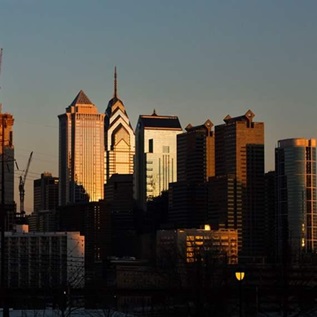Heritage Philadelphia Program To Award $725,000 To Regional Historic Sites And Museum
The Heritage Philadelphia Program, funded by the Pew Charitable Trusts and administered by the Independence Visitor Center Corporation, has awarded seven grants totaling $725,730 to historic sites and history museums in the Philadelphia area. The funds will support the development of exhibits, tours and other programs, collaborative marketing and historic preservation.
In alphabetical order, this year's grant recipients are as follows:
- Awbury Arboretum Association: For preservation and adaptive re-use of the 1862 Francis Cope House, Awbury's programmatic and administrative center. The work will enhance services to the surrounding neighborhood and the visiting public. ($99,500)
- Eastern State Penitentiary Historic Site: For a new roof and interior stabilization of Cellblock 7, which will allow visitor access to new areas of the historic structure, including the synagogue and Clarence Klinedinst's cell, from which bank robber Willie Sutton escaped in 1945. ($250,000)
- Historical Society of Pennsylvania (2 awards): To develop tours of the Northern Liberties/Kensington and Southwark/Queen Village/Italian Market neighborhoods of Philadelphia, using historical scholarship and the knowledge of local residents. ($53,450) HSP also received a grant on behalf of the Civil War History Consortium, a collaborative of 24 history organizations, which will conduct market surveys and other research to explore promoting Philadelphia as a destination for Civil War history. ($150,000)
- Mercer Museum of the Bucks County Historical Society: To develop and audience test new exhibit spaces within the Doylestown museum. ($60,280)
- Mill at Anselma Preservation and Educational Trust: To test a “virtual mill” and other ideas to enhance the visitor experience at this historic mill. ($75,000)
- Rosenbach Museum and Library: To plan the exhibition “Collecting at the Cutting Edge: Revealing New Insights into African American History” (working title), using objects from the Rosenbach's collections. ($37,500)
The awards were judged by a national panel of museum professionals, architects, and marketing and exhibition experts. Panel chair Kathleen Stiso Mullins, independent museum consultant and former President of Strawbery Banke Museum in Portsmouth, NY, was assisted by Susan Chin, Assistant Commissioner for Capital Projects for the City of New York Department of Cultural Affairs; James Jensen, Lead Exhibit Developer for the Connecticut Historical Society; Kenneth Turino, Exhibition Manger for Historic New England (formerly the Society for the Preservation of New England Antiquities); Sheldon Wolf, independent marketing and development consultant; and Laurence Yerdon, President of Strawbery Banke Museum.
The Heritage Philadelphia Program, established in 1998, supports history programs and the historic preservation of buildings in the Philadelphia region. Support is provided through grant funding and professional development activities that inspire innovation and build organizational capacity. The purpose of the Heritage Philadelphia Program is to encourage and enhance humanities-based programming, grounded in contemporary scholarship, to attract and engage new audiences and local residents in Philadelphia's nationally important history. “Greater Philadelphia is home to an unparalleled national treasury of buildings and collections that tell the stories of centuries of history,” said Heritage Philadelphia Program Executive Director Barbara Silberman, “It's our job—and it makes good cultural and business sense—to ensure that these resources are available to the public through the support provided by our program.”
For example, the Historical Society of Pennsylvania (HSP) will use Heritage Philadelphia Program grant funds to plan tours which explore Philadelphia's rich ethnic history, as embodied in two neighborhood clusters—Northern Liberties, Kensington and Latino neighborhood(s) commonly referred to as "El Barrio"; and Southwark, Queen Village and the Italian Market. Each of these areas has been home to successive immigrant communities over two centuries—including Latino, German, Irish, Eastern European, Arab, Italian and Southeast Asian—and remain vibrantly multicultural communities today. Each incorporates historic houses of worship, community art and culture centers, gardens and murals, and ethnic businesses and marketplaces. HSP staff will partner with local residents to develop the tours. These will provide a welcome opportunity to explore Philadelphia's history beyond the era of the Revolutionary War, something the Heritage Philadelphia Program works to encourage. “After 6 years and more than $4 million in grant funding, the city's historical landscape tells more stories about more people than ever before,” said Silberman.











